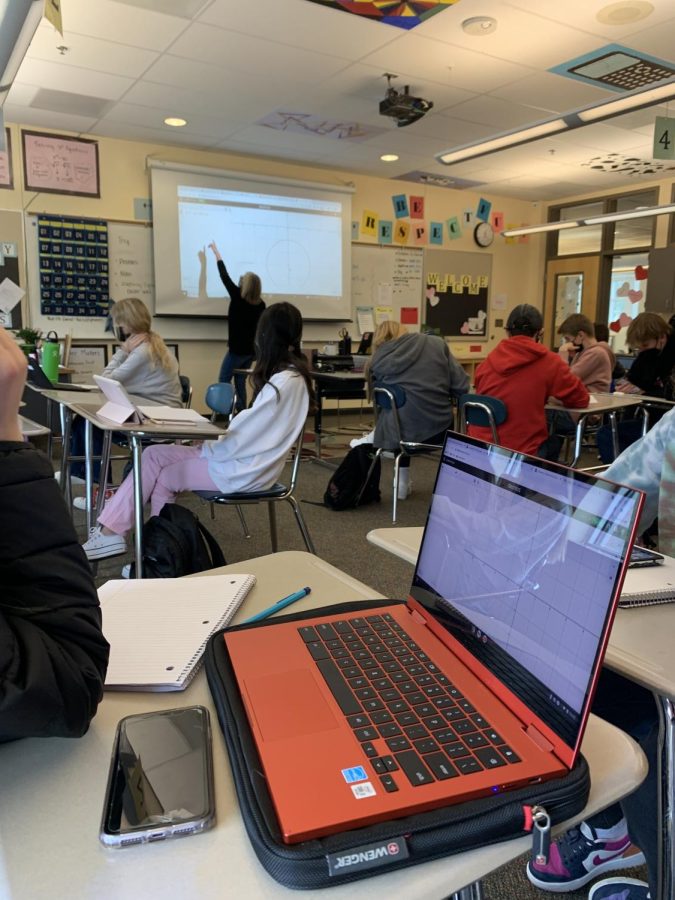Visual, auditory, and kinesthetic
Ms. Lockwood walking through a problem. She is talking about it and showing it on the screen while the students follow along.
Students absorb knowledge in different ways, visual, auditory, and kinesthetic are the three pillars for learning concepts. Understanding what kind of learner you are can have an immense impact on your educational career.
Visual learners learn best through looking at images and colors. Instead of explaining a math problem and how to do it, they want to see it done and be taken through the problem on paper. Demonstrations and examples are what helps them learn and understand concepts. Junior Preston Jeffords says, “Having a teacher walk me through it one on one helps.”
Auditory learners learn best when they hear the information, whether it is through a song or read-aloud. Reading information aloud to themselves is what gets the information to stick in their brains. Also, talking through ideas with peers can help a lot for auditory learners. Instead of seeing a problem on paper, talking through it is what helps them.
Kinesthetic learners learn best through movement. That includes flashcards, manipulating models, or moving while learning. A lot of times kinesthetic learners will jiggle their legs or fidget with an object while they are listening to class instruction.
Students learn in all different ways and the way that the lesson is taught can make the biggest difference to students. School is not always something that students love, so understanding how you learn can make school a little bit easier.









